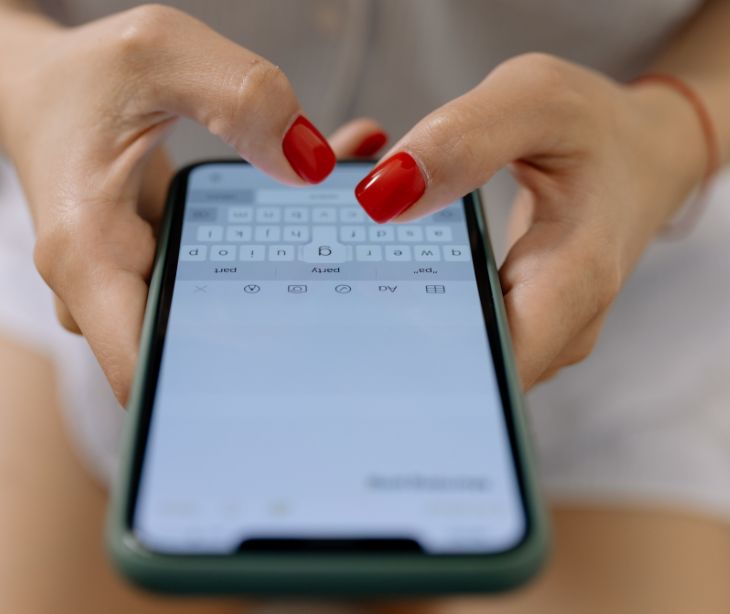
Stroke survivors often face long and challenging rehabilitation processes that require coordinated care, regular follow-ups, and ongoing support from healthcare providers and caregivers. Effective communication between patients, physicians, therapists, and family members helps ensure adherence to rehabilitation plans and improve long-term outcomes. However, given the sensitive nature of health information, communication must also comply with the Health Insurance Portability and Accountability Act (HIPAA) to protect patient privacy.
HIPAA compliant texting provides a secure and efficient way to facilitate post-stroke rehabilitation, allowing healthcare teams to engage with patients in real time while ensuring that personal health information remains confidential.
Understanding post-stroke rehabilitation support
According to Mayo Clinic, stroke rehabilitation is a personalized process that helps individuals regain abilities lost after a stroke. Depending on which areas of the brain are affected, a person may need to relearn how to walk, speak, eat, or carry out everyday tasks. The goal is to restore as much independence as possible and improve quality of life. Mayo Clinic notes that “there’s a wide range of complications from stroke,” and recovery looks different for everyone. However, research shows that people who take part in structured stroke rehabilitation generally recover better than those who do not. Rehab often begins within 24 to 48 hours of the stroke while the person is still in the hospital. It involves consistent, repetitive activities designed to strengthen both body and mind. “Rehabilitation is centered around specifically focused and repetitive actions,” according to Mayo Clinic. These may include motor-skill exercises, mobility training with aids such as walkers or ankle braces, and advanced therapies like functional electrical stimulation or virtual reality-based activities. Cognitive and emotional recovery are also part of the process. Occupational and speech therapists help with memory, problem-solving, communication, and daily tasks, while psychologists and social workers support mental health and adjustment. Recovery can take months or even years. Plans are regularly updated as progress is made. “With ongoing practice, you can continue to make gains over time,” the Mayo Clinic states. Success depends on a mix of factors, including the severity of the stroke, emotional resilience, family support, and the skills of the rehab team.
The importance of communication in post-stroke rehabilitation
The role of secure texting in promoting physical activity post-stroke
Physical activity is required in post-stroke recovery, aiding in the improvement of motor functions, prevention of secondary complications, and enhancement of overall quality of life. Yet, many stroke survivors struggle to maintain adequate physical activity levels after formal rehabilitation concludes. A study titled Keeping Active with Texting after Stroke (KATS) dived into this issue by co-designing a text message intervention to promote physical activity among stroke survivors. The intervention provided daily messages offering encouragement and support for the uptake and maintenance of physical activity following stroke. The study proved the potential of structured text message programs in fostering sustained physical activity among stroke survivors.
Enhancing functional communication through telepractice
Communication impairments, such as aphasia, are common post-stroke challenges that hinder effective rehabilitation and social integration. Integrating telepractice services, including secure text messaging, can mitigate these barriers. A study titled Improving Functional Communication Outcomes in Post-Stroke Aphasia via Telepractice investigated the efficacy of telepractice as a service delivery model for individuals with aphasia. Participants received remote speech-language therapy sessions employing methods like Oral Reading for Language in Aphasia (ORLA) and Conversational Script Training (CST). The findings revealed improvements in communication confidence and functional communication outcomes, indicating the feasibility and effectiveness of telepractice, potentially augmented by secure texting, in post-stroke rehabilitation.
Collecting outcome measures via SMS texting
Monitoring patient progress is beneficial for tailoring rehabilitation strategies and ensuring optimal recovery. Traditional methods of collecting outcome measures can be resource-intensive and may pose accessibility challenges for stroke survivors. A study titled SMS-text messaging for collecting outcome measures after acute stroke explored the feasibility, reliability, cost, and acceptability of using SMS-text messaging to gather health outcomes in the first 90 days after acute stroke. The results indicated that SMS texting is a feasible method for collecting post-stroke outcomes at scale, offering a low-cost and acceptable alternative to traditional follow-up methods.
Impact of mobile applications on stroke rehabilitation
Beyond simple texting, mobile applications encompassing secure messaging features have shown promise in enhancing stroke rehabilitation. A systematic review of the effect of mobile application types on stroke rehabilitation assessed the effect of various mobile app types on stroke impairments and functional outcomes. The review found that therapy apps targeting motor deficits, education apps, and apps providing rehabilitation videos or reminders positively influenced exercise adherence, activities of daily living, and quality of life. These findings suggest that integrating secure messaging within rehabilitation apps can further support stroke survivors in their recovery journey.
Secure, HIPAA compliant texting offers a simple but powerful way to support stroke survivors beyond the clinic. It helps keep them motivated, connected to care teams, and engaged in their recovery—whether through daily reminders to stay active, check-ins on progress, or support with communication challenges. It also makes it easier for providers to work together, share updates, and deliver consistent care. Altogether, secure messaging brings structure, encouragement, and coordination to a recovery process that can often feel overwhelming and isolating.
Advantages of HIPAA compliant texting for post-stroke rehabilitation
Real-time communication with healthcare providers
Stroke recovery can be unpredictable, and new symptoms often require quick attention. Secure texting gives patients a direct line to their care team, making it easier to ask questions about medication changes or new concerns. A study in Pilot and Feasibility Studies showed that structured text message support helped patients stay engaged and informed during recovery—especially during the vulnerable early stages.
Automated reminders for therapy and medications
Staying on top of medications and rehab routines is key to preventing setbacks. HIPAA compliant texting can be used to send automated reminders for therapy sessions, pill times, or upcoming appointments. Research shows these reminders boost adherence and help patients keep their recovery on track. The same Pilot and Feasibility Studies research found that prompts and progress messages were effective in building healthy habits after a stroke.
Improved care coordination among rehabilitation specialists
Stroke recovery usually involves a team: neurologists, physical therapists, speech therapists, and caregivers. Secure messaging makes it easier for everyone to stay updated and aligned on the care plan. According to Paubox, HIPAA compliant texting helps bridge communication gaps between providers, making rehab more efficient and personalized—especially for patients who live far from healthcare facilities.
Reduced hospital readmissions
When patients have ongoing support, they’re less likely to end up back in the hospital. The Pilot and Feasibility Studies article noted that daily text-based check-ins and motivational support helped stroke survivors avoid complications and feel more confident managing their recovery. Consistent, low-friction communication can make a big difference in preventing readmissions.
Enhanced caregiver support and education
Most stroke survivors rely heavily on family members for support. HIPAA compliant texting allows caregivers to stay informed, ask questions, and access useful resources. The same study outlined how co-designed message programs helped fill gaps in post-discharge support—not just for patients, but for their caregivers too.
Best practices for implementing HIPAA compliant texting
To effectively integrate secure messaging into post-stroke rehabilitation, healthcare providers should follow these best practices:
- Use encrypted and HIPAA compliant messaging platforms: Providers should implement secure messaging applications such as Paubox which offer encryption, authentication measures, and role-based access controls.
- Obtain patient consent for digital communication: Under HIPAA regulations, patients must consent to receive electronic health information via text messaging. Providers should obtain and document patient consent before initiating secure text-based interactions.
- Train healthcare staff and caregivers on secure messaging protocols: All members of the rehabilitation team should be educated on the appropriate use of HIPAA compliant texting to ensure privacy and compliance with security policies.
- Develop clear guidelines for secure messaging use: Providers should establish communication protocols that outline when and how HIPAA compliant messaging should be used, response time expectations, and escalation procedures for urgent medical concerns.
- Conduct regular security audits and compliance reviews: Healthcare organizations should routinely review their messaging practices to ensure compliance with HIPAA regulations and address any potential security vulnerabilities.
Our solution
Recovering from a stroke is hard enough, communication shouldn’t make it harder. With Paubox, care teams can securely text stroke survivors and caregivers, keeping them connected and supported without the burden of portals, logins, or extra apps. Whether it’s sending daily activity reminders, therapy updates, or follow-up instructions, messages arrive instantly and are encrypted straight to the patient’s phone.
Post-stroke rehabilitation requires consistency, encouragement, and teamwork. Paubox makes it easier for neurologists, therapists, and caregivers to share real-time updates, answer questions, and provide reassurance, all while protecting sensitive health data. From physical therapy reminders to mental health check-ins, secure messaging helps patients stay on track and feel less isolated in their recovery.
For many stroke survivors and their families, texting is the most accessible and familiar way to communicate especially when juggling appointments, medication schedules, and daily responsibilities. Paubox gives care teams the tools to deliver compassionate, compliant support, helping improve therapy adherence, reduce readmissions, and build stronger care coordination. When every message matters, secure texting keeps patients and providers aligned on the path to recovery.
See more: Introducing HIPAA compliant texting API by Paubox
FAQs
Can HIPAA compliant texting support emotional recovery in stroke survivors?
Yes. Secure messaging gives mental health professionals a private and accessible way to check on emotional well-being. Regular support can help manage anxiety, depression, and frustration that often follow a stroke.
How can healthcare providers balance texting with in-person care in stroke rehab?
Secure texting should complement in-person therapy by reinforcing exercises, answering follow-up questions, and helping patients stay engaged between visits.
Are there accessibility features that help stroke survivors use secure messaging?
Many secure platforms offer voice input, large text options, and compatibility with screen readers. These features make communication easier for individuals with speech, motor, or cognitive impairments.
How should caregivers be included in secure post-stroke messaging?
Including caregivers in communication, with patient consent, allows for better coordination. Caregivers can help interpret instructions, provide updates, and ensure follow-through on the rehab plan.
What should providers consider when texting stroke survivors with aphasia or cognitive deficits?
Clear, concise language improves comprehension. Adding visual cues, breaking information into small parts, and using consistent timing for messages can support more effective communication.
Subscribe to Paubox Weekly
Every Friday we'll bring you the most important news from Paubox. Our aim is to make you smarter, faster.



